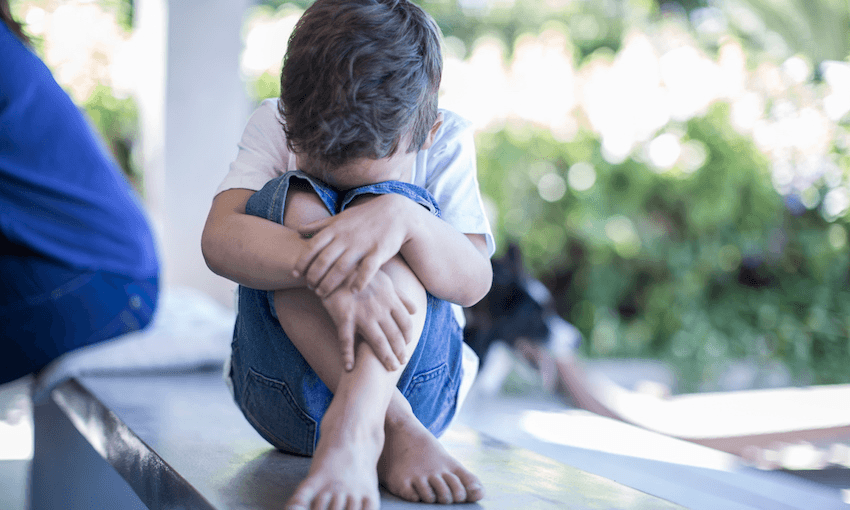In response to The Spinoff’s coverage of the baby with the broken bones, Oranga Tamariki’s Paul Nixon explains the careful process behind taking a child into state custody.
The impact of a tamaiti being removed from their family is traumatic and how we manage this is very important.
Many New Zealanders share our deep concern for children who have died in abusive situations. Our social workers come to work every day determined to do their absolute best to keep tamariki safe and help them thrive and reach their full potential.
When we have concerns about the safety of a child our job is to build safety around them by understanding their needs and the risk of harm. There are many ways we can do this but sometimes the only option is to remove them from the situation or people that pose that harm or risk of harm. This might be a short-, medium-term or permanent measure.
A decision to remove a tamaiti from his or her parent or caregiver to make them safe is always based on a comprehensive assessment of their needs and circumstances. To understand these risks we talk to the child and their parents or caregivers at the earliest opportunity, and we talk to other family or whānau. We also work with a range of people and agencies that are involved with and know about the tamaiti including their school, health professionals and police.
To help our decision making we seek expert advice from other professionals. For example, we get expert medical advice about the nature and possible cause of physical injuries and the likelihood of them being accidental or non-accidental. That said, we should always weigh up uncertainties and doubts in any evidence of harm to tamariki as they can receive injuries in many ways. We don’t just act on medical evidence alone.
The decision to remove a child from their home is never made by an individual social worker. They work in teams using carefully developed practice guidelines, tools and procedures, and consulting with supervisors and practice leaders.
Every day in every Oranga Tamariki office case discussions about tamariki are supported this way. Information is analysed, information gaps identified and possibilities and solutions are explored.
If our assessment indicates harm or a risk of harm to a child, it is our responsibility to act. This doesn’t automatically mean removing tamariki from their homes but it does mean we must act to ensure they are safe.
Many family and whānau have strengths that can be harnessed to keep the child safe at home with safety plans around them. In these circumstances we will work with the tamaiti, their families and others involved with the child to develop and monitor these plans.
There are times when the level of harm or risk of harm is too high and there are not enough protective factors around the child for this to happen. In those cases safety planning must include alternative care arrangements.
Child protection involves complex considerations and sometimes we have to manage safety where there is uncertainty and changing or conflicting information. We do this by keeping the focus on the safety and wellbeing of tamariki, being transparent in our safety planning, and reviewing and re-evaluating decisions and plans as circumstances and information change. Good child protection work is all about balance.
A decision to remove a child will always involve the Family Court. If we believe the only way to keep a tamaiti safe is to place them with an alternative caregiver we must satisfy the Family Court the harm or risk of harm requires this action and that we have explored all other options before arriving at this decision.
The Family Court makes decisions based on the best information available and will not support our recommendations if it is not satisfied with the evidence or information we provide.
Removing tamariki from their homes is distressing for everyone involved, including the child and the parent or caregiver who has lost the care of their children. It’s sometimes difficult for the parents or caregivers to understand and accept the risk, or acknowledge the impact, of issues that led to the decision, such as drug and alcohol abuse, family violence, untreated mental illness, or serious parenting problems.
The removal of tamariki from their home can often feature in the media. Our key concern, focusing on the best interests of the child, is protecting their privacy. This is why we are very cautious about providing any details that many identify a child.
People knowing about deeply personal events in a child’s life can impact how they are treated now and in the future. Media coverage, including social media, goes online permanently and will follow them for the rest of their lives – through loan applications, employment checks and relationships. Tamariki deserve to have their privacy respected.
Finally, a core part of our role is to encourage New Zealanders to support us in our work around the wellbeing of children.
Everyone has a role to play in the care and protection of tamariki. With a shared focus we can achieve a collective impact.
Follow the Spinoff Parents on Facebook and Twitter.
